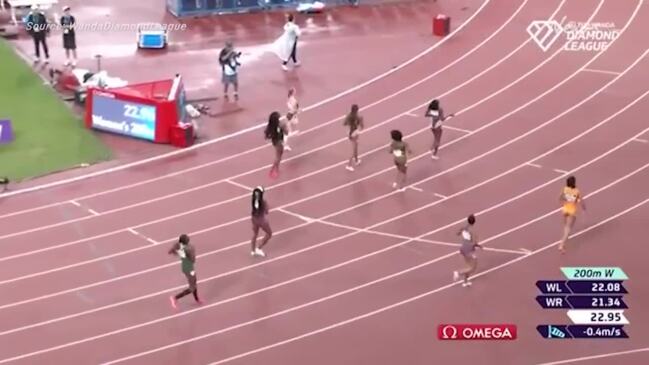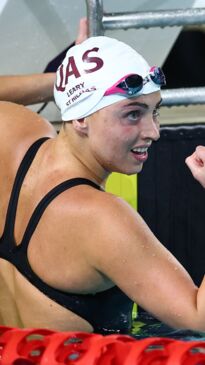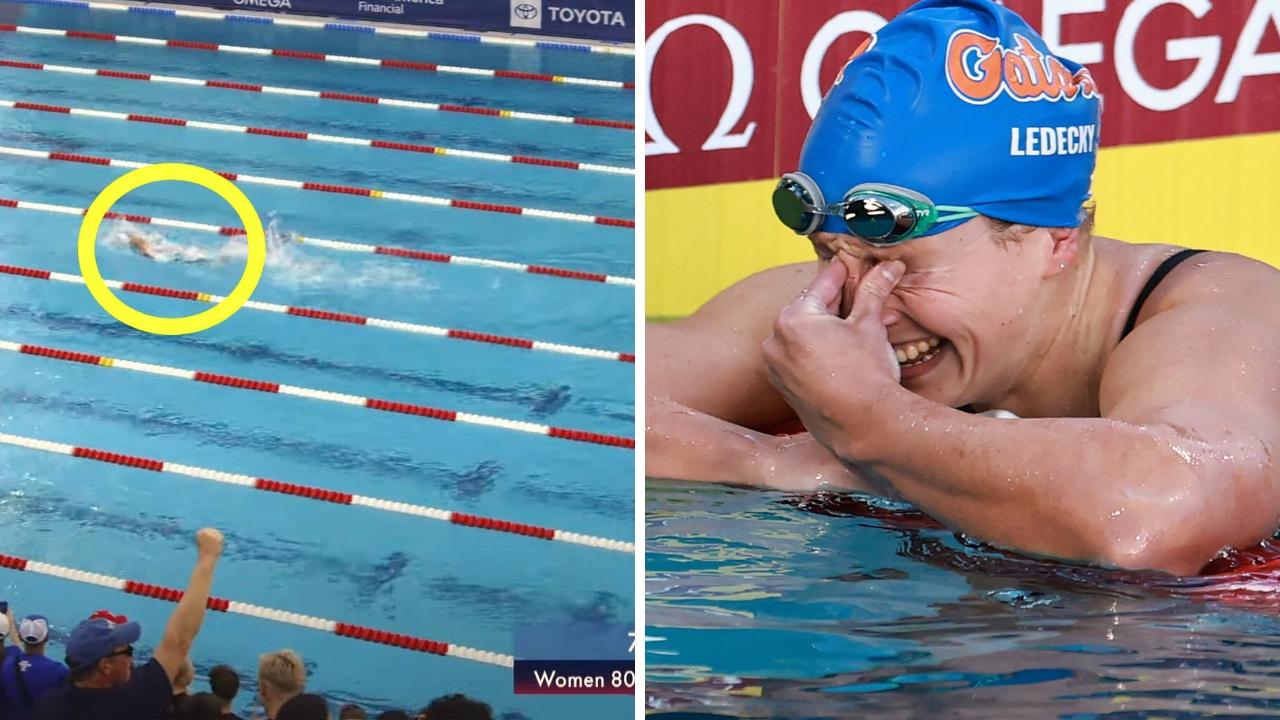The behind the scenes game of an Olympic campaign and the ways to cash in on a two-week window
Olympians are the hottest property for a small window every four years, SHANNON GILL digs in to the high stakes opportunity presented to capitalise on that two-week spotlight.

Olympics
Don't miss out on the headlines from Olympics. Followed categories will be added to My News.
“The Olympics are a bit like a meteor, they dominate the landscape for the week leading in, the two weeks of and then maybe the two or three weeks after,” Tony Box tells CODE Sports.
“Then we hit NRL and AFL finals and we’re back to having a Collingwood player’s hamstring injury on the back page.”
While athletes concentrate on their performance in the pool or on the track, there is another game being played behind the scenes; the race to parlay that fleeting Olympic spotlight into a sustainable career.
Box is the managing director of TGI Sport Australia (formerly TLA), who manage some of Australia’s biggest stars in Paris like Emma McKeon, Mollie O’Callaghan and Kaylee McKeown.

“That window is important. Two or three athletes come out as the faces of the Games each time from Australia. So they’re the ones that generally get the most commercial opportunities over time.”
Andrew Condon, managing director of sports marketing firm Gemba, agrees.
“The Olympics thrust them into the spotlight very, very quickly. And if managed well, they should be able to retain a residual level of awareness, likability,and marketability,” he tells CODE Sports.
“Even when they’re not as visible, hopefully through the work that their management do, they’re able to put in place endorsements, appearances and media deals that keep them salient for two or three years post-Olympics.”
Topping the charts
Gemba also has the numbers to back it up.
Its Asset Power Score uses the categories of reach,interest, influence and momentum to arrive at a comparable figure between athletes to measure marketability for prospective brands.
Through 2024 Daniel Ricciardo and Sam Kerr have held the title across Australian sport nudging up towards a score of 3000, with the likes of Pat Cummins and Mary Fowler on the next rung below 2500.


Back in April 2021 Emma McKeon and Ariarne Titmus sat below 1500 before soaring above 3000 post-Olympics after their gold medal hauls.
They became the most marketable athletes in Australia, but only for a moment as the Olympic glow gradually faded. In March this year both McKeon and Titmus sat below 1800 scores, but as of last month with the Olympics looming they had zoomed back above 2100 ahead of Alex de Minaur and well in front domestics stars like Reece Walsh and Nick Daicos.
You could safely expect them, and perhaps some other Olympic heroes to top the charts by the end of the Paris games.
“Once you’re getting to the levels that Emma, Ariarne and Bronte Campbell are at, your appeal has transcended your sport,” Condon says.
“And that’s when it becomes interesting from a commercialisation perspective. They disappear from our view post-Olympics, but they’ve taken that moment to stay relevant to far more people.”
“It becomes like (NRL player) Reece Walsh, where his appeal is well beyond rugby league fans.”
Gold, Gold, Gold
Winning gold medals would appear to be the common denominator to getting brands excited, yet Box says there’s more nuance today.
“Weirdly enough, it also then relies on how many gold medallists Australia has overall,” Box says.
“Back in the ‘90s if you won a gold medal you were basically set up. The nation would start calling you by your first name, it was ‘Susie’ or ‘Kieran’.”
25 gold medals were won across six Olympics before Sydney in 2000 yielded 16 gold medals.
“We were so successful that not all the gold medallists out of the home Olympics would have made a lot of money.”
Two decades on, 17 gold medals were won in Tokyo and there’s only so much money to go around.

Yet a gold medal is not always prerequisite, there are other ways to capture the heart, and the marketers, of the nation during an Olympics.
“It can sometimes be a different story, a show of integrity or the battling spirit. These are the types of virtues that the public look for,” Box says.
No Australian male has run to a gold medal on the track since 1968, so Peter Bol’s effort to finish fourth in the
800m final in Tokyo has translated into an ongoing marketable personality.
Personality pays
Allowing the nation to know you is something Box and talent managers are increasingly encouraging. This is a far cry from the 2000s trend where athletes were media-managed to the brink of being robots.
“We’ve gone away from the trend where everyone was overtrained and became vanilla, you’d interview 100 athletes and get the same answer 99 times.”
“Now they have the courage to be open and honest. It’s okay to share frustration because it’s human, and people will warm to people who are more human.”
Paralympian Alexa Leary’s joyous post-swim interview sharing her backstory at the national swimming trials was a media sensation.
That approach has helped her land partners like Woolworths, Amazon, Stanley drink bottles, July luggage and The Iconic since linking up with TGI in early 2024.

Keeping the Olympic dream alive
After Leary’s recent appearances on television screens, messages rolled in via social media from brands wanting to partner.
It was a version of the rush that can come during and immediately after an Olympics, like Emma McKeon’s golden games in Tokyo.
Invites to events, launches and speaking engagements are plentiful, before working through the brand opportunities.
“Initially there might be 10 to 15 major brands, but you’re probably only having genuine conversations with three to four of them eight weeks down the track because we’re both putting the rigour into how it would work.”
McKeon’s extraordinary achievements put her in a different stratosphere where she can afford to be judicious about who she partners with.
Going into Paris she calls Speedo, Nike, Dior, OMEGA, George & Matilda, Cadbury and Cetaphil partners; many came after her Tokyo star-turn.
For others, attracting commercial partners can be essential to make the Olympic dream viable. Hurdler Liz Clay credits setting up her social media as a brand influencer channel as the key for her to become a virtual full-time athlete.
“If they’re going through a uni and participating in their sport, it’s fine,” Box says.
“But once an athlete is on the other side of 25 and their peers are in full -time jobs and earning good money, you do need sponsors to stay in the sport.”
20 years ago athletes would typically pick up 2-4 partners for a four year Olympic cycle, but a more instant world has changed those dynamics.
“Brands now are only really interested in the hot market opportunity. Most want to jump on board in the Olympic year for short campaigns.”
“So an athlete might work with more brands over a four year cycle now than they would in the past, but they haven’t got that surety of steady partners.”
Condon says that can be a tricky tightrope to walk for athletes post-Paris.
“The brutal reality is some will come back in debt, so any deals they can do are absolutely important.
“They’ve got to have good advisers around them though to help them work out how to leverage those opportunities into ongoing relationships.”
That evolution has also presented opportunities for creative thinking.
Now athletes may be as attractive to a brand’s HR department as their marketing department.
TGI-managed athletes are now being engaged by brands away from the public eye to work directly with younger staff members on goal setting.
Olympic Legacy
For those that have their spotlight moment in Paris, capitalising could have far reaching effects that result in a more comfortable life.
In Olympic years the demand for Olympic legends skyrockets through media, event or ambassador jobs.
“Your position in Australian sporting history is fixed,” Box says.
“So if you’re known as one of our great Olympic performers, and enjoy working with brands and public speaking, there’s opportunities.”

Michael Klim is one of TGI’s ‘legends’ that has become a man in demand leading into the Olympics.
“He was an Olympic champion and he still looks pretty much the same. So he can walk into a room and everyone knows Klimmy, he’s got that aura still.”
Athletes who become stars in Paris will get even more opportunities given we’re heading towards a Brisbane Games in 2032.
In 2000 Olympic greats like Murray Rose, Shane Gould and Dawn Fraser were in huge demand before and during the event.
So while athletic performance is what matters in the Paris spotlight , the commercial legacy of it can be the material life-changer.
“When you’re an Olympic champion, you get to call yourself an Olympic champion for life,” Box says.
And so can a sponsor.
More Coverage
Originally published as The behind the scenes game of an Olympic campaign and the ways to cash in on a two-week window





